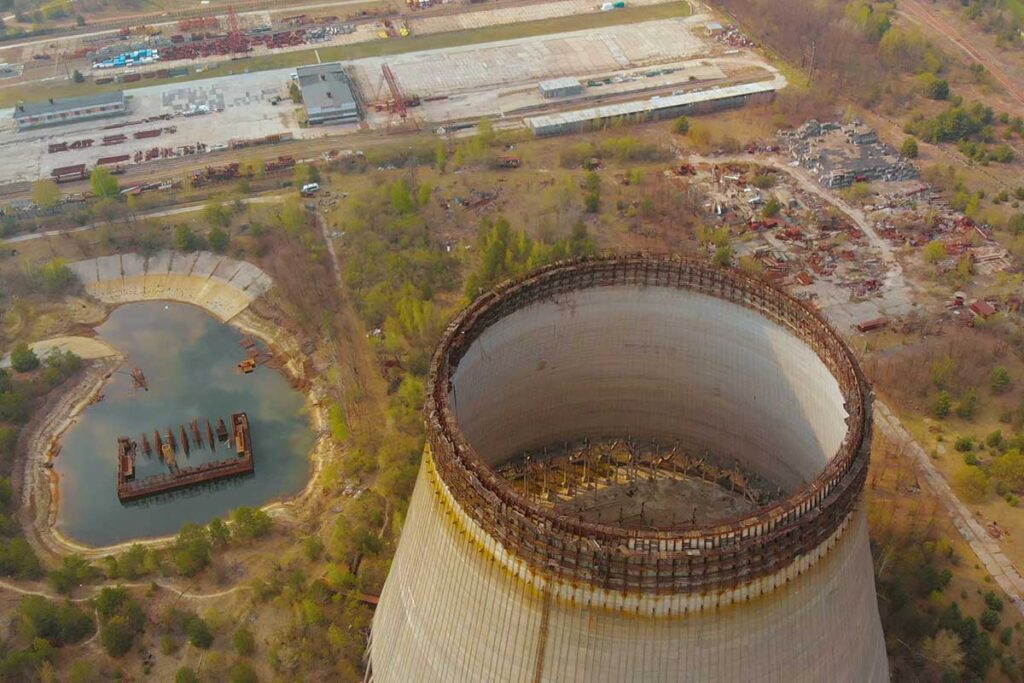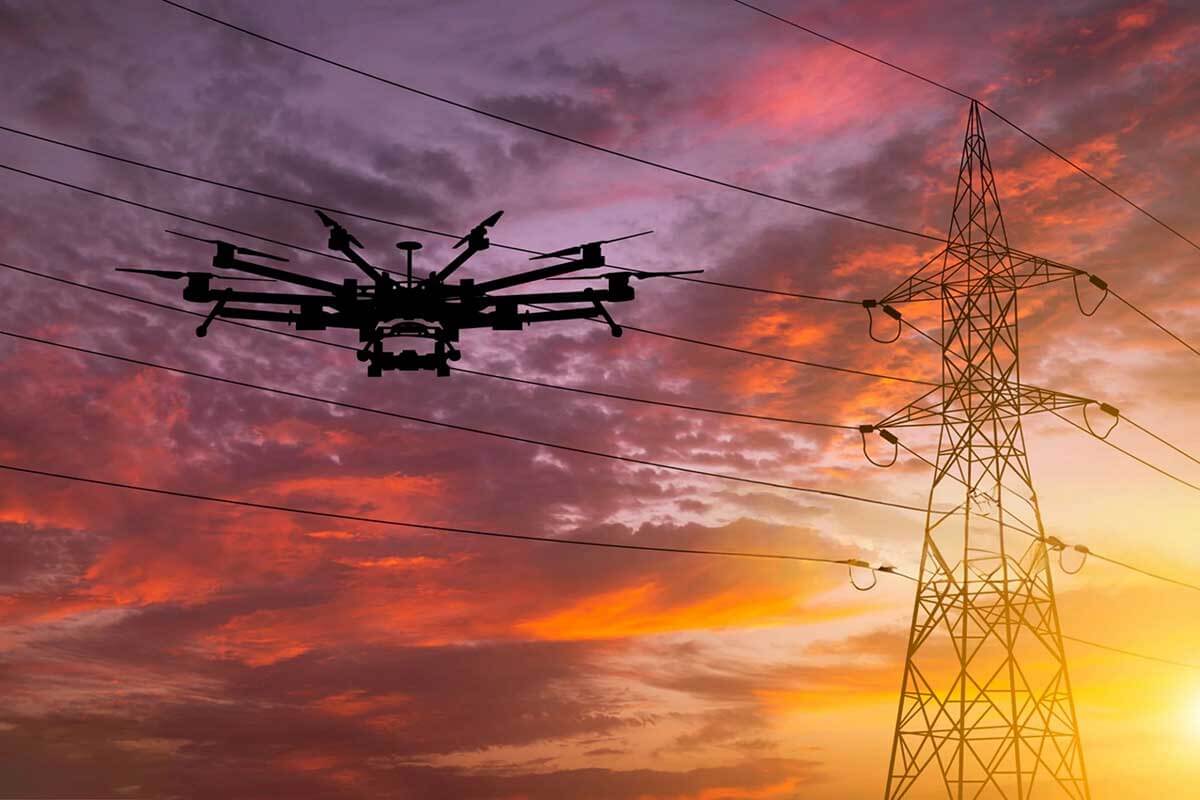By: Nate Ernst, AG Energy Ambassador
As uncrewed aircraft systems (UAS) technology advances, so does its potential to contribute to various sectors, particularly infrastructure utilities. Of the multiple paths to beyond visual line of sight (BVLOS) scalability, one framework facilitating this integration is the FAA Section 44807 authorization.
Unlike the Small UAS Rule (14 CFR Part 107) which is only applicable to UAS that weigh less than 55 pounds, the 44807 authorization is geared towards UAS that weigh greater than 55 pounds. Similar to the April 2021 update to Part 107 that allowed for sUAS operations over people/at night, the 44807 authorization can grant relief from some of those same restrictions but for larger UAS (i.e., altitudes above 400’, operations on non-participants, conditional Beyond-Visual-Line-of-Sight).

Understanding FAA 44807 Authorization
FAA Section 44807, part of the FAA Reauthorization Act of 2018, provides a pathway for the operation of UAS in the national airspace system (NAS) under certain conditions. This section allows the Secretary of Transportation to determine whether a UAS can safely operate in the NAS and then to grant authorization accordingly.
Prior to 44807 approvals, operators who intended to use large UAS were subject to Public Aircraft Operations (PAO) under location-specific Certificates of Authorization (COAs). While many of the same flight conditions are present between PAO and 44807 operations, 44807 operations do not require a COA from a Public Proponent (PAO).
44807-approved UAS have far greater capability (i.e, payload) and performance (i.e., flight duration) than sUAS due to their expanded weight limitations. A bigger and heavier aircraft is almost always a more powerful and valuable aircraft. Therefore, expanded use cases where Part 107 sUAS cannot compete is where 44807 operations will thrive. An example of this would be linear, medium altitude, pipeline inspection; a task currently completed via thousands of manned flight hours per week in the United States. 44807-authorized UAS can theoretically replace those manned flight hours without compromising efficiency at scale.
Requirements To Obtain a 44807 Authorization
Obtaining a 44807 authorization is not a trivial feat. Applicants must demonstrate the safety and reliability of their UAS operations to the FAA. (See FAA Guide here),
Key requirements include:
- Safety Case: Companies must present a robust safety case, including risk assessments and mitigation strategies. This includes (but is not limited to) a robust Detect-and-Avoid (DAA) system integration.
- Concept of Operations (CONOPS): Detailed descriptions of the intended UAS operations, including flight paths, altitudes and airspace considerations.
- Technical Specifications: Comprehensive technical documentation of the UAS, including performance capabilities, system assembly documentation, maintenance procedures/logs, engineering documentation and historical system testing data, to name a few.
- Operator Qualifications: Operators must be adequately trained and certified to operate the UAS. In most cases, current 44807 approved operations require an operator with far more qualifications than a Part 107 operator’s certificate (i.e., Part 91 pilot rating).
- Communications and Navigation: Demonstrating reliable communication and navigation systems to maintain control of the UAS. This is typically demonstrated through both documentation and flight observations.
As of March 2025, the FAA has approved 103 UAS under Section 44807. To reiterate, the 44807 approval is aircraft and Concept of Operations (CONOPS) specific. Therefore, if an operator is looking to utilize one of these aircraft for their own operations, they may need to obtain a new 44807 authorization if the currently approved CONOPS does not meet the operator’s needs.
Companies Utilizing 44807 Authorization for Infrastructure Inspection
Several innovative companies have leveraged 44807 aircraft authorizations to push the boundaries of UAS operations in the energy sector. Some of those companies are focusing on inspection applications. Notable examples include:
- Phoenix Air Unmanned (PAU): Utilizing UAS for linear infrastructure inspection using a single turbine unmanned helicopter system with a max gross takeoff weight of 191.8 pounds.
- Drone America: Utilizing UAS for such as monitoring electrical transmission lines, infrastructure inspections and public safety applications.
Realities of Operating UAS Under 44807 Authorization
While the potential benefits of 44807 UAS operations are relatively significant, there are also challenges and pitfalls that companies must navigate, from technical challenges to regulatory costs and overcoming potentially negative public perceptions of UAVs.
Technical Challenges
Operating UAS in the NAS requires overcoming several technical hurdles. These include ensuring reliable communications between the UAS and ground control, maintaining robust navigation systems, and addressing issues related to flight times and payload capacity. Oftentimes, these aircraft utilize satellite communications (SATCOM) in lieu of the Radio Frequency (RF) communications typically used in sUAS.
Regulatory Costs
Companies proposing to utilize UAS under a 44807 must go through an intense compliance and readiness period. The administrative costs to comply with regulatory requirements as well as the operating expenses to prove the flight operations for 44807 requirements can be costly. Of the many challenges, the FAA-approval of a viable Detect-and-Avoid (DAA) system has proven to be one of the most significant regulatory hurdles.
Public Perception
The integration of UAS into everyday operations can face resistance from the public due to concerns about safety and privacy. Considering the recent aviation-related accidents involving commercial air travel as well as unidentified aircraft phenomena events (i.e., New Jersey), public perception of 44807 operations can be a challenge now that they are authorized to operate well above 400 feet and many miles downrange over populated areas.

The Value Proposition of 44807 UAS Operations
Despite the challenges, the value proposition of operating UAS under FAA 44807 authorization can be compelling.
Enhanced Efficiency
Tasks that traditionally require significant manpower and time (including Part 107 operations), such as inspections and surveys, could be completed at lower cost (per inspection unit). Even with Part 107 waivers, operators are still subject to short flight times (typically less than 1.5 hours) carrying limited sensors. 44807 aircraft can potentially carry a sensor package and endure single flight times that rival (or at least mirror) manned aircraft operations. In some instances, 44807 aircraft are operating in a manner in which they take off in the morning, and complete their single flight operations 6-8 hours later, carrying the same sensor technology that a manned airplane would fly. This is truly scaled efficiency from a “per-mile/”per hour” perspective.
Scaled Safety
44807 UAS are force multipliers. Depending on the specific CONOP, a single 44807 operation can replace many Part 107 sUAS operations in a single day. At scale, a 44807 operation is comparable to a manned aircraft inspection. The safety case for 44807 operations is two-fold:
- Removing the pilot from the manned aircraft operation.
- Reducing the number of UAS operators in the field
Precursor To Part 108 and Type Certification
While completely separate from Aircraft Type Certification and (the anticipated) Part 108 rule, 44807 operations are a step in the right direction towards truly unrestricted BVLOS UAS flights in the NAS.
Summing this Up…
The applicability and attractiveness of a 44807 UAS operation for one utility or another comes down to business case analysis and propensity to tolerate risk. As industry begins to no longer view commercial UAS technology as “new”, hard lessons are being learned about the reality of (1) where UAS integration is a sound business decision and (2) where UAS is (currently) a non-starter.
The 44807 operation is geared toward UAS operators who are seeking alternatives to (the anticipated) Part 108 and/or Aircraft Type Certification. While the approval can be fruitful if deployed correctly under the correct guise, the caveats and cost considerations must be carefully considered. If the operator is willing to make the investment on technological advancement and is tolerant of unforeseen challenges throughout the process, I believe it is a tangible step towards UAS integration.
By: Nate Ernst

